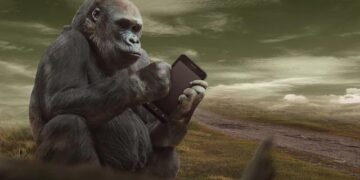Fast Facts
Location: Utah
Established: November 19, 1919
Size: 146,597 acres
Annual visitors: 4.62 million (2023)
Visitor Centers: Zion Canyon, Kolob Canyons
Entrance Fee: $35 per vehicle
Website: nps.gov/zion
Why you should go to Zion
Mormon pioneers arriving in the area in the 1860s were so overwhelmed by the natural beauty of Zion Canyon and its surroundings that they named it after the Old Testament name for the city of Jerusalem.
Zion National Park revolves around Zion Canyon—15 miles long and almost 3,000 feet deep in places. It also includes much of the surrounding terrain, landscapes that range from desert to the high-altitude forests sprawling across the plateaus above the canyon.
The park’s ecosystems support about 800 native plant species, including more flowers than anywhere else in Utah. “Zion offers an incredible combination of gorgeous views and amenities,” says Kyle Sheppard, who runs a Zion-centric photography business with wife Tori, whose grandfather and great-grandfather worked at the park. “Plus, it’s relatively easy access to a bunch of diverse landscapes.”
Where to find the best views in the park
Angels Landing is almost universally hailed as the park’s most spectacular viewpoint. But the super steep hike isn’t for everyone. Reaching the legendary overlook requires 1,827 feet of elevation gain along a narrow, rocky, vertigo-inducing trail with precipitous drop-offs and chains to support hikers along much of the route. Due to its popularity, the Angels Landing trek requires a permit obtained through a Park Service lottery.
Drivers can explore the high country via two motor routes that start outside the park. Kolob Terrace Road runs 22 miles (35 km) between the town of Virgin and Lava Point with its scenic overlook. Exit 40 on Interstate 15 drops down to Kolob Canyons Visitor Center and the start of a drive along Kolob Canyons Road that leads 5.4 miles (8.7 km) to a vista of impressive red-rock gorges.
Where to find the park’s best trails
Zion Canyon is laced with popular trails, from easy hikes like Emerald Pools (2.2 miles/3.5 km) and the Riverside Walk (2.2 miles/3.5 km) to the strenuous uphill slog that leads to Scout Lookout (4.2 miles/6.2 km).
The park’s most popular hike is The Narrows, a watery trail up the Virgin River through a spectacular slot canyon at the north end of Zion Canyon. Much of the route is through ankle- to waist-high water, so be prepared to get wet. Most people only hike a mile or so up the canyon. But you can also hike The Narrows “top down” along a 16-mile (26 km) route that starts at Chamberlain Ranch.

The Narrows is a water-soaked slot canyon in Zion National Park popular with hikers.
Photograph by Ben Horton, Nat Geo Image Collection
“The Narrows puts you deep in the heart of a wide slot canyon, demonstrating the erosive power of the river that formed the area,” says Sheppard. “You’ll see more of the details of Zion’s rock close up, from the striations in the stone to the oasis layers that provide a green contrast to the sandstone walls.”
Backpackers can trek the West Rim Trail (14.2 miles/22.8 km) across the wilderness Horse Pasture Plateau to Lava Point, where another trail connects to Kolob Canyons in the park’s northwest corner.
The Kolob Canyons may be smaller than Zion Canyon, but this red-rock wilderness delivers almost always empty hiking trails and towering cliff walls.
The best spots for seeing wildlife
“Zion has many different habitats to explore for wildlife,” says ranger Ally O’Rullian, the park’s communications specialist, adding that the easiest way to spot native animals is simply by looking up.
More than 290 bird varieties have been spotted in the park, ranging from majestic raptors like the California condor and peregrine falcon, to ground dwellers like quail and roadrunners, to hummingbirds, songbirds, and the super-cute Mexican spotted owl.
“A visit to a river, a canyon rim, and a pine forest will give you a chance to see plenty of different birds,” O’Rullian adds. “Birds are very active at dawn and dusk. They sing more at these times, making them easier to locate than midday. Nocturnal birds like owls are also active at dawn and dusk, making them easier to locate than at night.”
Mule deer often graze Zion Canyon in the early morning and late afternoon, especially along the Riverside Walk or the path to Emerald Pools. Dusk is also a great time to watch for the five species of bat that call Zion home. Just about any time of day, you can see rock squirrels, chipmunks, or cottontail rabbits scampering between their burrows.
Hiking after dark along the canyon floor or Watchman Campground, you might catch a fleeting glimpse of a coyote, gray fox, or raccoon. With keen eyes or binoculars, you might be able to pick out bighorn sheep perched on the cliffs along the Zion-Mount Carmel Highway on either side of the tunnel.
How to visit the park like a Nat Geo Explorer
“I’ve done canyoneering, I’ve done The Narrows, I’ve gone climbing in Zion, hiking, camping, all of the above,” says photographer and National Geographic Explorer Ben Horton, who’s been exploring and photographing the area since his college days and now takes his sons hiking in the park.
Rather than dealing with the summertime crowds in the canyon, Horton recommends driving up Highway 9 to viewpoints on either side of the Zion-Mount Carmel Tunnel, like the spectacular Canyon Overlook.

The striated sandstone peaks of Zion National Park glow in the moonlight as car headlights pass on the road below.
Photograph by Alex Treadway, Nat Geo Image Collection
Horton still has a list of things that he hasn’t done in Zion. “I’ve been really wanting to hike in wintertime and do some ice climbing and take some photos of the frozen waterfalls,” he says. “Because they’re not there all winter, you’ve got to get in at just the right time. And Kolob is where I’d like to do some big wall climbing.”
Top experiences in Zion
The old riverside town of Springdale is the park’s primary gateway and home base for many of the private outfitters that offer adventures in and around Zion. Choose between rock climbing and rappelling, helicopter and 4×4 tours, guided hikes along The Narrows, and tubing on the Virgin River downstream from the park.
The Zion National Park Forever Project, the park’s official nonprofit partner, organizes a number of outdoor learning adventures, service projects, classes, lectures, and special events through its field institute, in addition to operating three stores inside the park.
Pedestrian and vehicle bridges connect Springdale with the Zion Canyon Visitor Center on the other side of the Virgin. In addition to exhibits and information, the visitor center is the southern terminus of the Zion Canyon Shuttle System, which is the only way to reach the heart of the canyon between spring and fall when visitation peaks. Private vehicles are not allowed beyond Canyon Junction, turnoff to the Zion-Mount Carmel Highway (State Route 9).
Even if you’re not headed for south-central Utah, the highway makes an interesting detour through what was once the world’s longest auto tunnel to a geological oddity called Checkerboard Mesa, a sandstone facade scarred by hundreds of vertical and horizontal fissures.
The first stop on the shuttle route is the Zion Human History Museum, which details the heritage of Native Americans and Mormon pioneers in the region through exhibits and a 23-minute park film.
Entering the canyon, the shuttle makes seven stops, including viewpoints of celebrated stone formations such as Court of the Patriarchs (Abraham, Isaac, and Jacob) and Weeping Rock, as well as historic Zion Lodge. The park’s most celebrated landmark—a 1,500-foot rock face called the Great White Throne—can be seen from numerous places along the canyon road.
The road (and shuttle route) ends with a dramatic flourish inside the Temple of Sinawava, a colossal natural amphitheater.
Best things to do for families
Hiking is far and away the most popular family activity in Zion. Kids love splashing through The Narrows and listening to their voices echo off the canyon walls. The relatively flat Riverside Walk and the easy trek up to Emerald Pools are also family-friendly.
During spring and fall when the shuttle is running and the road is closed to civilian traffic, Zion Canyon Scenic Drive is ideal for family biking. The paved Pa’rus Trail which links the visitors center and South Campground with the Human History Museum and Canyon Junction, is also open to bikes. Several bike shops in Springdale rent pedal and electric-powered cycles.

The Virgin River and its tributaries, such as this one, continue to sculpt and shape Zion National Park.
Photograph by Keith Ladzinski, Nat Geo Image Collection
Designed for kids to learn more about the park, Zion Nature Center offers videos and interactive exhibits on local wildlife, geology, and history. Many of the park’s ranger-led activities are also family-friendly including the Watchman Campground evening programs and the two-hour Ride With A Ranger bus tour.
And O’Rullian recommends picking up a Junior Ranger booklet at a visitor centers or the Zion Human History Museum. “Children aged four and older can complete activities [in the booklet] and attend a ranger-led program to earn their Junior Ranger badge.”
Where to stay
Located in the heart of the canyon, Zion Lodge is a classic national park hotel designed by famed “parkitect” Gilbert Stanley Underwood and opened in 1927. As the only non-camping overnight option inside the park, reservations should be made well in advance.
Zion’s three developed camping areas include year-round Watchman and seasonal South campgrounds near the canyon visitors center, and Lava Point near the top of Kolob Terrace Road. Reservations are available at Recreation.gov. Camping in the park’s backcountry requires a wilderness permit from the Park Service. Half the backcountry campsites can be booked in advance; the rest are first-come, first-served.
Outside the park, the Zion region offers a wide variety of overnight options, from motels, lodges, and B&Bs in Springdale to upscale glamping at Under Canvas Zion and AutoCamp Zion Airstream trailer resort.
Here’s what else you need to know
Access: Utah Highway 9 is the only way to reach Zion Canyon in the heart of the park. The main park entrance is around an hour’s drive from St. George, in the west, and an hour from Kanab, in the east. The park’s Kolob Canyons section in the northeast is reached via Exit 40 on Interstate-15, half an hour north of St. George.
When to visit: Zion National Park is open year-round, but many park activities and amenities are only available during the high season between May and September. However, that’s also when the park is most crowded and least visitor friendly.
“Summer is busy in Zion,” says O’Rullian. “Plan on arriving early in the morning or later in the evening if you’d like to avoid the hottest parts of the day.”
The shuttle bus is the only way to access Zion Canyon during the summer, and once the visitors center parking lot is full, visitors must park in Springdale and take the town shuttle or walk into the park.
Although temperatures are cooler in the late fall, winter, and early spring, the park sees far fewer visitors, parking is easy, and you can drive your own vehicle through Zion Canyon.
Are pets allowed?
Except for service animals, pets are only allowed in campgrounds, parking lots, picnic areas, and the Pa’rus Trail, and they must be restrained (on a leash) at all times.
How accessible is Zion?
Both visitors centers, the Zion Canyon shuttle bus, the Human History Museum, and Zion Lodge, as well as restrooms, picnic areas, and two trails (Riverside Walk and Pa’rus) are accessible. Watchman and south campgrounds have accessible sites.
>>> Read full article>>>
Copyright for syndicated content belongs to the linked Source : National Geographic – https://www.nationalgeographic.com/travel/national-parks/article/zion-national-park































